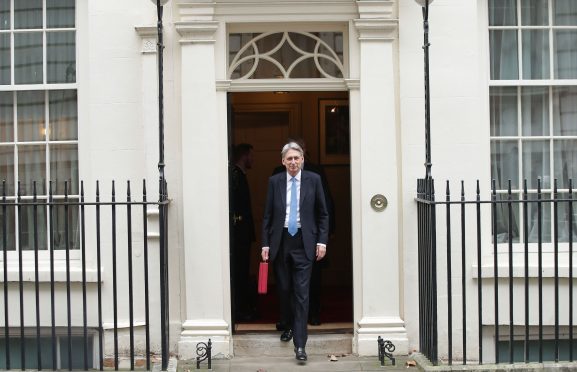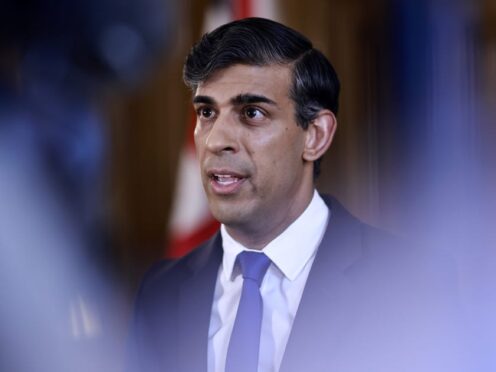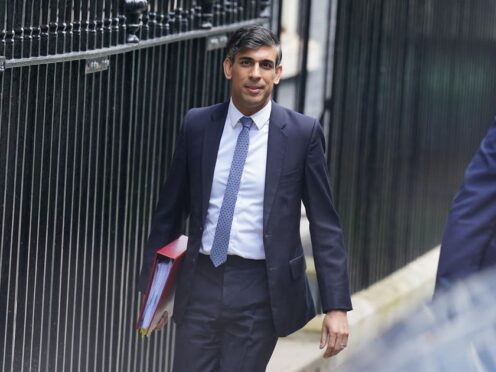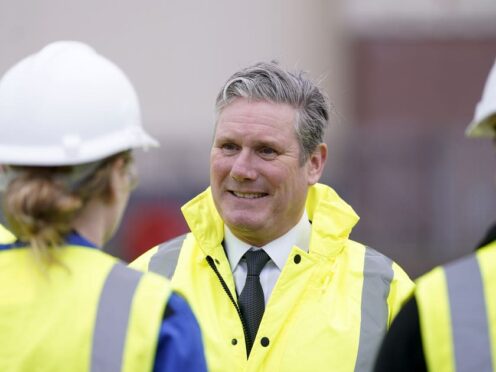Chancellor Philip Hammond reveals the budget. Follow our live coverage below:
- Chancellor of the Exchequer Philip Hammond rose to deliver his Autumn Budget statement to the House of Commons at 12.37pm.
- Chancellor Philip Hammond has announced that an extra £3 billion will be set aside over the next two years to prepare for “every possible outcome” in the Brexit process.
- The Chancellor said he is setting aside £3 billion over the next two years for Brexit preparations and stands ready to allocate further sums if and when needed.
- Office for Budget Responsibility forecasts a further 600,000 people in work by 2022.
- OBR revises down forecast for GDP to 1.5% in 2017, 1.4% in 2018, 1.3% in both 2019 and 2020, before picking back up to 1.5% in 2021 and 1.6% in 2022 In the spring budget the forecast for 2017 was 2%, with 1.6% in 2018, 1.7% in 2019 and 1.9% in 2020.
- OBR predicts inflation will peak at 3% this quarter before falling back towards its 2% target over the next year.
- The OBR expects debt to peak this year and then gradually fall as a share of GDP.
- Borrowing is forecast to be £49.9 billion this year – £8.4 billion lower than forecast at the Spring Budget – is then predicted to fall in every year of the forecast from £39.5 billion next year to £25.6 billion in 2022/23, to reach its lowest level in 20 years.
- Borrowing to fall as a percentage of GDP from 2.4% this year, to 1.9% next year; then 1.6%, 1.5% and 1.3% in subsequent yeas, reaching 1.1% in 2022/23. The OBR forecast the structural deficit to be 1.3% of GDP in 2020/21.
- Debt will peak at 86.5% of GDP this year, then fall to 86.4% next year; then 86.1%, 83.1% and 79.3% in subsequent years, reaching 79.1% in 2022/23.
- National Productivity Investment Fund to be extended for a further year and expanded to more than £31 billion.
- A further £2.3 billion allocated for investment in research and development, and the main R&D tax credit increased to 12%.
- Investment of £500 million in a range of technological initiatives ranging from artificial intelligence, to 5G and full fibre broadband.
- Action Plan published to unlock over £20 billion of new investment in UK scale-up businesses.
- Support for electric vehicles through the establishment of a new £400 million charging infrastructure fund, an extra £100 million in Plug-In-Car Grant, and £40 million for charging R&D.
- From April 2018, the first year vehicle excise duty rate for diesel cars that don’t meet the latest standards will go up by one band, funding a new £220 million Clean Air Fund – but the hike in tax will not apply to vans.
- Government to investigate how the tax system and charges on single-use plastic items can reduce waste.
- A further £20 million to support further education colleges to prepare to deliver T-levels. Government to provide £40 million to train maths teachers. New £600 Maths Premium for schools, for every additional pupil who takes A level or Core maths.
- Number of trained computer science teachers to be tripled to 12,000.
- New partnership between Government, CBI and TUC to “set the strategic direction” for a National Retraining Scheme to boost digital skills and support expansion of the construction sector. Immediate investment of £30 million in the development of digital skills distance learning courses.
- New £1.7 billion Transforming Cities Fund to deliver local transport priorities, with half to be shared by the six areas with elected metro mayors and the rest open to competition by other cities in England.
- Decisions taken in this Budget also mean £2 billion more for the Scottish Government, £1.2 billion more for the Welsh Government and over £650 million more for a Northern Ireland Executive.
- Government will legislate to allow Scottish Police and Fire VAT refunds from April 2018.
- Reforms to Universal Credit to remove the seven-day waiting period so entitlement starts on the day of the claim and to ensure that any household needing an advance can access a full month’s payment within five days of applying. Repayment period for advances to increase from six to 12 months.
- New Universal Credit claimants in receipt of Housing Benefit to continue to receive it for two weeks as part of a £1.5 billion package to address concerns about the delivery of Universal Credit.
- National Living Wage to rise in April 2018 by 4.4%, from £7.50 an hour to £7.83.
- Income tax-free personal allowance to rise to £11,850 and higher rate threshold to £46,350 in April 2018, leaving the typical basic rate tax payer £1,075 a year better off compared to 2010.
- Tobacco duty escalator to continue at inflation plus 2%, with an additional 1% duty on hand rolling tobacco this year. Legislation to increase duty on high-strength low-quality alcohol from 2019, but duties on other ciders, wines, spirits and on beer to be frozen.
- Short-haul Air Passenger Duty rates and long-haul economy rates to be frozen, paid for by an increase on Premium class tickets and on private jets.
- Cancellation of fuel duty rise for both petrol and diesel which had been scheduled for April.
- Additional commitment of £2.8 billion to the NHS in England, £350 million to be provided immediately to allow trusts to plan for this winter. and £1.6 billion in 2018/19, with the balance in 2019/20.
- Additional funding to be provided to cover settlement in NHS pay structure modernisation talks.
- Package of measures on tax avoidance and evasion forecast to raise £4.8 billion by 2022/23.
- Switch from use of RPI to CPI measure of inflation in calculating business rates to be brought forward by two years to April 2018, saving businesses £2.3 billion over five years.
- Income tax to be applied from April 2019 on digital economy royalties relating to UK sales which are paid to a low-tax jurisdiction, raising about £200 million a year.
- Kensington and Chelsea Council to be provided with a further £28 million for mental health services and regeneration support for the area around Grenfell Tower. The Government “will not let financial constraints get in the way of essential safety work” on tower blocks elsewhere in the country.
- At least £44 billion of capital funding, loans and guarantees over five years to support house-building and deliver 300,000 new homes a year.
- Cash for house-building will include a £630 million small sites fund; some £2.7 billion to more than double the Housing Infrastructure Fund; £400 million for estate regeneration; a £1.1 billion fund to unlock strategic sites; £8 billion of new financial guarantees to support private house-building; and an additional £34 million to develop construction skills. Target of building 300,000 homes annually to be met “by the mid-2020s”.
- New review chaired by Sir Oliver Letwin to look at gap between planning permissions and housing starts. Homes and Communities Agency to become Homes England, with a remit to “facilitate delivery of sufficient new homes, where they are most needed, to deliver a sustained improvement in affordability”.
- Commitment to 1 million new homes in the Cambridge-Milton Keynes-Oxford corridor by 2050.
- Abolition of stamp duty for all first-time buyer home purchases up to £300,000.
- Mr Hammond completed his statement at 1.39pm.










